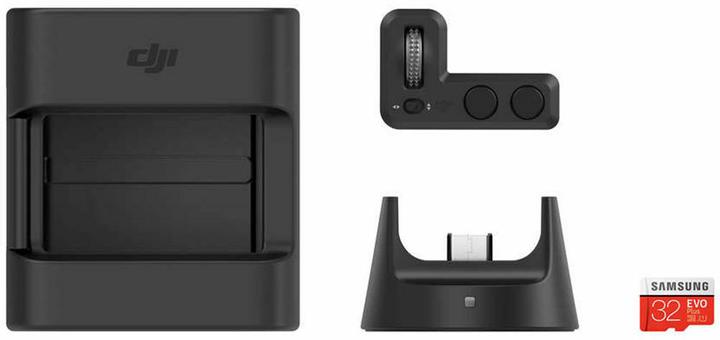
Osmo Pocket: Shake-free videos from your trouser pocket
I tested the smallest gimbal in the world for a few days. Whether I was skiing or out and about in the city of Zurich, by day or by night. The Osmo Pocket makes the GoPro look old, especially at night.
Everyone wants the small gimbal camera from DJI. But does it really live up to the hype? This is the question I am investigating here.
The gimbal is so small that people around me hardly notice it. When I'm walking around the city and have my hands around the handle, all I can see is the small head with the camera and gimbal. Somehow, it reminds me a little of Wall-E from the Disney film of the same name.
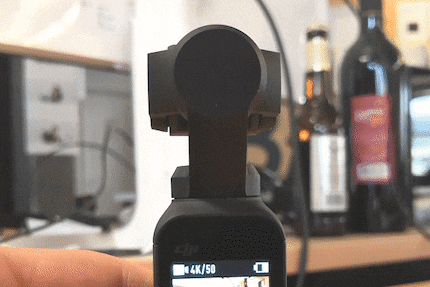
Connections and small display
The camera cannot be used without a current smartphone with a USB-C or Lightning connection. The new DJI Mimo app must be downloaded before first use. This is used to activate and update the gimbal. Due to the lack of Wi-Fi or Bluetooth connection, this is only possible via cable. The Lightning connector is easy to lose because it is so small. A wireless connection to the smartphone can be established via an additionally available Wi-Fi adapter. But in this day and age, I don't think it should be a problem to incorporate Bluetooth or Wi-Fi. If the device were a few millimetres longer, it wouldn't bother anyone. But DJI probably knows that there is good money to be made with accessories.
The display of the Osmo Pocket is logically also very small. It is only suitable for a rough check to ensure that the object is correctly framed. However, the gimbal can be carried anywhere and at any time in your trouser pocket or jacket pocket. It could therefore replace your mobile phone camera, at least for filming. The battery is already empty after a morning of intensive use or around 2 hours of recording time. However, the non-removable battery can be easily recharged on the go using a power bank.
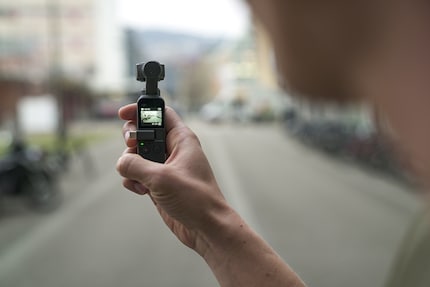
Pro mode via detours
The smartphone can be attached to the side of the gimbal using the clip-on dongles supplied. Actually a very good idea. Unfortunately, however, this puts a lot of strain on the already sensitive charging connection. There is a lot of weight hanging on the smartphone and during my tests the connection kept breaking off because the gimbal slipped out. Resourceful accessory manufacturers such as Pgytech provide a remedy with this device.
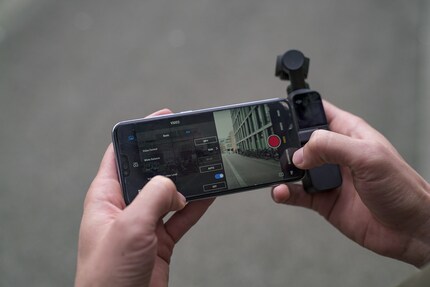
If the Osmo is connected to the smartphone, there are significantly more setting options available than just via the menu on the small camera touchscreen. There is a Pro mode in which all parameters can be freely set. Unfortunately, there are no setting options for colour profiles such as D-Log, for example. However, these will be made available with a later update. If the smartphone is no longer connected to the camera, the camera remains in Pro mode. However, settings such as shutter speed or ISO can then no longer be changed.
Better in low-light situations than the competition
The almost equally high price and the similar features to the competition from GoPro make a comparison obvious. Both cameras are equipped with a small 1/2.3 inch sensor and film in 4K resolution at 60 frames per second. The biggest difference is the design and the mechanical gimbal of the DJI camera compared to the software-based stabilisation of the GoPro.
At 4K 60 fps, the GoPro can only record in "Wide": The field of view is extremely wide-angle and corresponds to approximately 15 mm in full format. Unfortunately, this cannot be switched to other viewing angles such as "linear" or "medium" in the highest possible resolution. Converted to full frame, the Osmo Pocket has an equivalent of around 26 mm. This makes objects and faces appear more natural and less distorted.
The direct comparison shows that the hardware stabilisation via the gimbal actually works better than the software stabilisation of the GoPro. The GoPro reaches its limits particularly when shooting in low light. This is where the gimbal really comes into its own, as it works independently of the lighting conditions. However, compared to a full-blown gimbal such as the Ronin-S, on which an SLR camera is mounted, the stabilisation does not work equally well. Due to the heavy weight of a large gimbal, the muscles and arm joint stabilise automatically in the Z-axis. With the Osmo Pocket, movements in the Z-axis are clearly recognisable when walking.
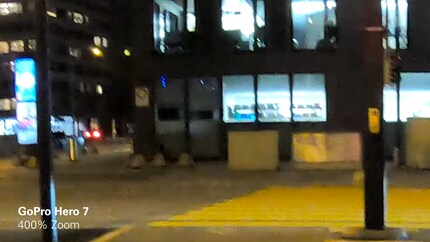
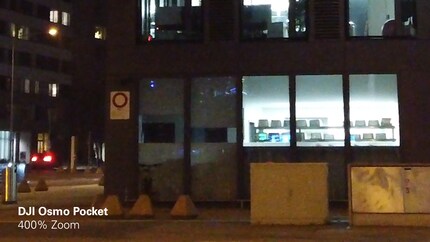
Different orientation than GoPro
The Osmo Pocket not only stabilises the recordings better than the GoPro, but also produces sharper videos - especially in low light. It therefore appears that DJI's camera is ahead of GoPro's competition in many areas. Nevertheless, the GoPro still has its place, especially when it comes to taking action sports footage. It is designed to take pictures from a wide variety of perspectives. This is thanks to mounts for surfboards, cars, helmets, etc. The Osmo Pocket appeals more to vloggers or lifestyle filmmakers. Until now, many people have bought a GoPro, even if they couldn't present any hard action tricks. With the new Osmo Pocket, GoPro is likely to lose ground in this segment.
Please with microphone input
All in all, I am very impressed by the latest gadget from DJI. If you like to capture your adventures on video and don't need a zoom function, you can't go wrong with this device. The mechanical gimbal and the form factor make the camera particularly interesting. However, to make the device suitable for more professional use, DJI would have to consider a mic input in the next version. If you want to push the camera even further, you can buy underwater housings, mounts for GoPro mounts and many other accessories.
As a Multimedia Producer, preparing multimedia content and knowing about cutting-edge technology is my business. My main focus at digitec is producing videos. I can’t wait to try out new products such as cameras, drones or smartphones as soon as they’re launched. This is where being at the source comes in rather handy. When I’m not working, I’m probably skiing, biking or hiking – the mountains are my place to be.
